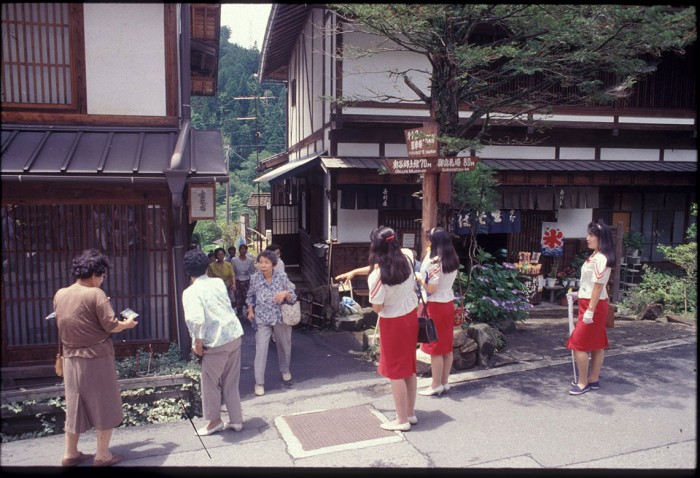
The Japanese tourist has become a ubiquitous figure throughout the world. Typically, he
or she is part of a travel group with a guide waving a small flag, moving the group at a rapid pace through the day’s schedule. The tourist is heavily slung with cameras, video recorders, and perhaps a tape recorder to catch a bird call. The clothes appear to be nearly a uniform with small variations between members of the group. Tour groups follow the same itinerary and the same tour buses follow each other in the same lock-step that the members of each group follow. Actually, the same may be said of the tourists of any nation, although there may be slightly more variation between individuals in their clothes.
Tourism is in any case a significant industry. Japanese begin tourism at an early age when school tours, especially at the middle and high school levels, are arranged to the most popular places: Kyoto and Nara. University clubs frequently take their members on trips, but most of these are to potentially romantic spots like Karuizawa (if to a city) or to country locations like ski resorts or mountain trails.
Companies contribute massively to tourism by arranging company outings to famous places or to spas. The purpose is partly paternalistic: to provide a service to the employees and to make sure they are relaxed, healthy, and happy workers. Another purpose, however, is to build up the sense of identification within the group and the human relations on which it is based. Company trips also eased the economic pinch many workers felt in the 1950s and 1960s when they could not afford to travel on their own.
Community organizations or clubs also organize many trips. Some are to famous places for the sake of traveling to a famous place, but often the purpose is more specific. A club specializing in studying and writing “tanka” poems (thirty-one syllable poems in 5-7-5-7-7 pattern) might follow in the footsteps of a famous poet like Basho to get a better idea of the scenes and places which inspired his masterpieces.
The Japanese tourist lives a busy life on the road. Not only are there places which must be seen and appreciated, but whether the trip is organized by the school, company, or poetry club, there are colleagues and friends to whom attention must be paid. Since human relationships are important, they must be cultivated throughout the day. Indeed, long into the evening this important aspect of travel is given attention.
Tourism, of course, began with pilgrimages and was popularized in the Edo period. At that time, tourism not only brought travelers together, but often it brought their villages together. Groups were organized to pool resources in order to permit members to travel one or two at a time. In such cases, those who did not travel were drawn into communal work and vicarious travel which were, to a certain extent, as enjoyable as the actual thrills the pilgrims would experience on the road.
Modern tourism has drawn Japanese abroad too. Almost as many Japanese as Americans can be found traveling around various parts of the world. Much of this travel duplicates the pattern of travel within Japan: group travel has been the most common form of travel abroad until recently. Even couples on their honeymoon are found in a tour group. In the past few years, however, as more familiarity with foreign nations develops, as income levels increase, and as women become more independent, individual Japanese travelers or small parties of friends without tour guides are becoming more common.

